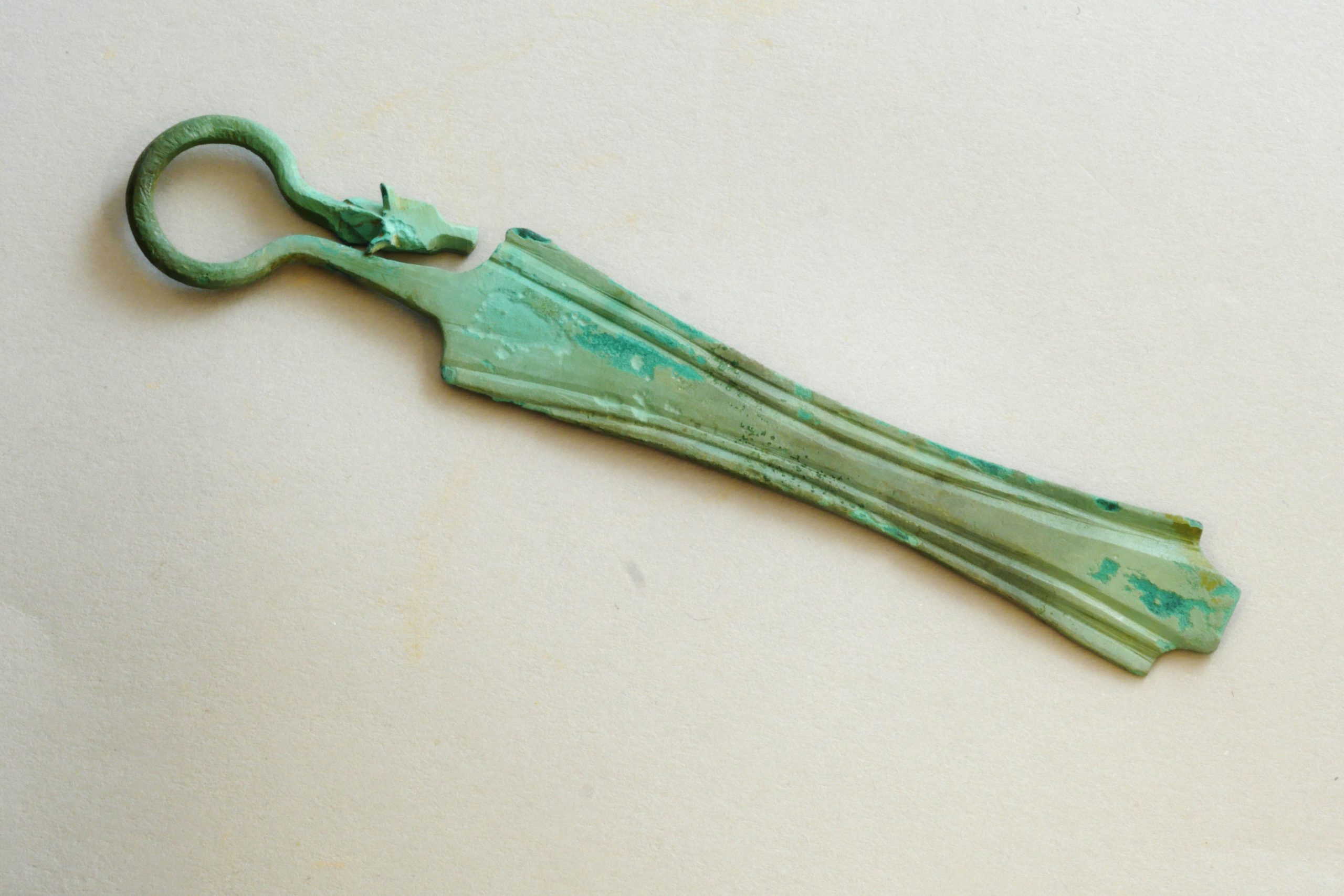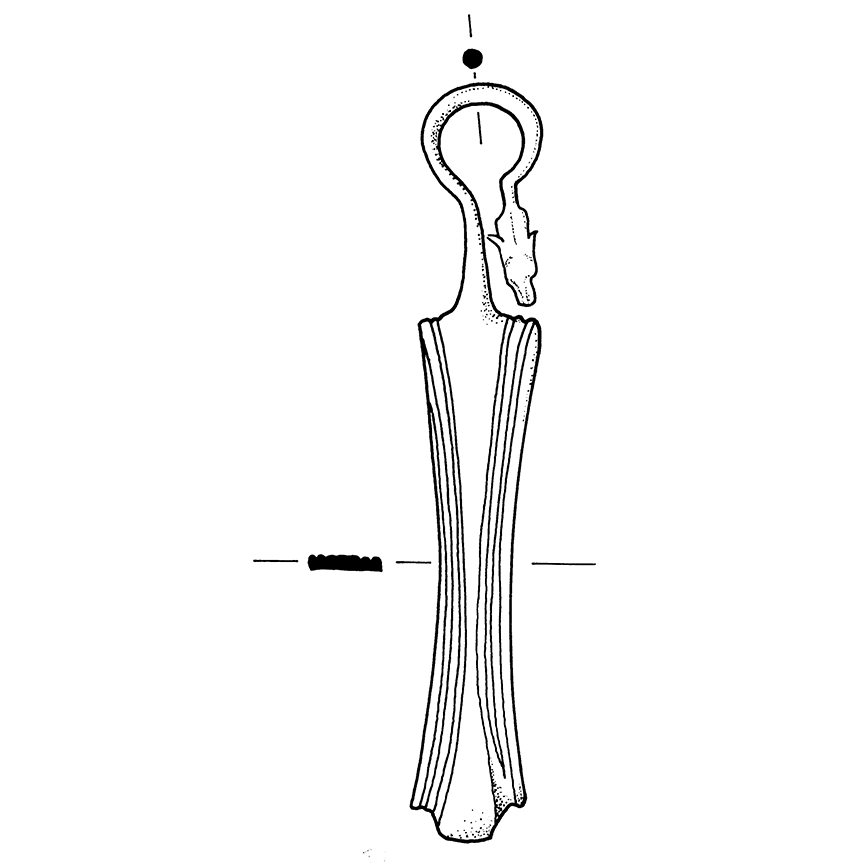
Etruscan Cetamura
Wine Strainer
Period | Etruscan |
Year | Late 4th – early 3rd c. BCE |
Material | Bronze |
Location | Well #1 |
Cet. Inventory | Inv. C-13-474 |
The bronze handle of this Etruscan wine strainer survived but the sieve-like bowl normally attached to such strainers is missing. This type of object was employed when wine was poured into a cup, to strain wines that had excessive sediment or other impurities.
Cast bronze handle of an Etruscan wine strainer, with a looped end terminating in the stylized head of an animal, perhaps a deer. Finely crafted and well preserved, the handle retains some of its bronze coloration along with large areas of bright green patina with scattered spots of darker green.. Nothing of the body of the strainer was found in the well.
Such utensils were part of banqueting ritual and are sometimes depicted in banqueting scenes on tomb frescoes. Numerous comparanda from Chiusi, Orvieto, Populonia, and Sovana suggest a date in the late 4th–3rd cent. BCE.
Dating: Found in Well Group IV (ca. 100-50 BCE), but certainly earlier.
Bibl.: Cianferoni 1992, 21. Della Fina and Pellegrini 2013, 229 (ca. no. 1.2.6-15). De Puma 2013, 4.51a-b, 82.





